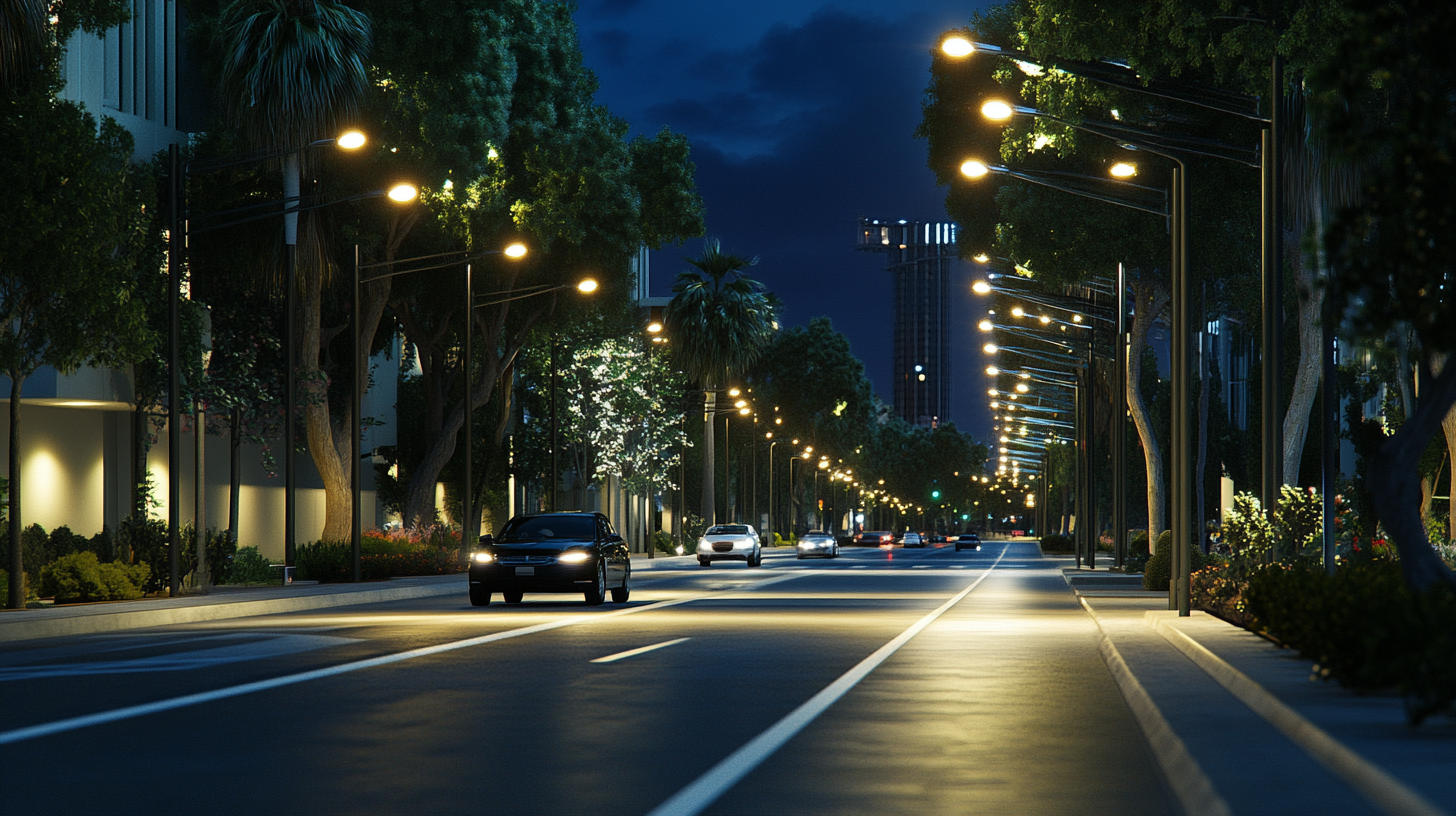Comprehensive Specifications for Street Lighting Design and Tips for Optimal Implementation
Street lighting design plays a crucial role in enhancing the safety and functionality of urban environments. As cities continue to evolve and expand, the need for well-thought-out street lighting systems becomes increasingly apparent. Effective street lighting not only improves visibility for pedestrians and drivers but also contributes to the overall aesthetic appeal of neighborhoods, fostering a sense of community and security. This blog aims to provide comprehensive specifications for street lighting design, offering insights and best practices that align with contemporary urban planning principles.
Implementing optimal street lighting design requires a careful consideration of various factors, including energy efficiency, lighting quality, and the specific needs of different urban areas. By understanding the importance of these elements, city planners and designers can create innovative lighting solutions that effectively address the unique challenges posed by various environments. In this blog, we will delve into key specifications and offer practical tips to ensure the successful implementation of street lighting systems, ultimately leading to safer and more vibrant public spaces.

Key Factors to Consider in Street Lighting Design for Urban Areas
Street lighting is a crucial aspect of urban design that significantly influences the safety and accessibility of public spaces. When considering street lighting design for urban areas, several key factors should be acknowledged to create environments that foster well-being and deter crime. First and foremost, the intensity and color temperature of lighting can affect how safe an area feels to pedestrians. Warmer, softer lighting can create an inviting atmosphere, while harsh, bright white lights might cast unflattering shadows, inadvertently increasing fear and anxiety.
Another important element in street lighting design is the placement of fixtures. Strategically positioning lights to illuminate pedestrian pathways, crosswalks, and waiting areas can enhance visibility and safety. Involving community input during the design phase can also lead to more robust lighting solutions that reflect the specific needs and concerns of residents, further promoting a sense of ownership and communal safety.
Moreover, integrating smart lighting technology can provide dynamic solutions that adapt to real-time conditions. For instance, motion sensors can dim lights in low-traffic areas while increasing brightness in times of pedestrian activity. This not only saves energy but also ensures optimal safety when needed most. By focusing on these key factors—light quality, strategic placement, and adaptive technology—urban planners can design streets that are both functional and conducive to a vibrant, safe community atmosphere.

Understanding Different Types of Street Lighting Fixtures and Their Uses
Street lighting plays a crucial role in urban environments, enhancing safety and visibility while impacting the aesthetic of public spaces. Understanding the various types of street lighting fixtures available is essential for optimal implementation. Common options include LED, HPS (High-Pressure Sodium), and LFL (Linear Fluorescent) fixtures, each offering unique benefits. For instance, LED fixtures are increasingly favored for their energy efficiency and long lifespan, contributing to reduced maintenance costs. According to the Global Business Report on lighting fixtures, the market for sustainable lighting solutions is projected to grow significantly, driven by the demand for energy-efficient options in residential and commercial settings.
The introduction of DarkSky Approved luminaires is a noteworthy development in urban lighting design. These fixtures are certified to minimize glare and light trespass, addressing concerns about light pollution. By focusing on responsible outdoor lighting principles, cities can avoid over-illumination, which not only wastes energy but can also disturb ecosystems. The use of smart streetlights is another innovation gaining momentum, integrating advanced technology to create more responsive, efficient lighting systems. Features such as adaptive brightness based on real-time conditions and automated schedules ensure that streetlights only operate when needed, further minimizing environmental impact.
As urban areas strive to balance effective lighting with environmental responsibility, understanding different types of street lighting fixtures and their applications becomes imperative. By investing in smart technologies and adhering to guidelines like those provided by the DarkSky Approved program, cities can promote sustainable lighting practices that benefit both residents and wildlife.
Essential Guidelines for Light Placement and Spacing in Streets
Street lighting plays a crucial role in enhancing safety and visibility in urban environments. When designing street lighting systems, it is essential to consider light placement and spacing to ensure optimal illumination. The primary goal is to create a well-lit environment that minimizes shadows and dark spots, which can pose risks to pedestrians and drivers alike. The distribution of light should follow guidelines that take into account factors such as road width, traffic volume, and local conditions. This careful planning helps in delivering consistent lighting levels that meet safety standards.
Incorporating sustainable design principles is increasingly important in modern street lighting projects. For instance, employing energy-efficient LED fixtures not only reduces energy consumption but also lowers maintenance costs. Additionally, light placement should consider the surrounding landscape and architectural features to achieve a harmonious integration within the urban fabric. Properly spaced poles can enhance the aesthetic appeal of streets while maintaining functionality. Urban planners are encouraged to think holistically about the role of street lighting in improving public spaces, as evidenced by recent initiatives aiming to provide safer and more convenient access to key urban areas.
Furthermore, the strategic placement of street lights can support broader city goals, such as promoting walkability and enhancing community connectivity. For instance, effective lighting can lead to increased foot traffic in commercial districts, benefiting local businesses. It is vital for city planners and engineers to collaborate closely to ensure that lighting designs not only meet technical specifications but also align with the vision of creating vibrant and livable urban areas.
Evaluating Energy Efficiency and Sustainability in Street Lighting Solutions
The importance of energy efficiency and sustainability in street lighting solutions cannot be overstated, particularly as cities around the globe pivot towards greener infrastructure. According to the International Energy Agency (IEA), street lighting can account for approximately 30% of a city's energy consumption. By transitioning to LED technology, municipalities can achieve energy savings of up to 50-70%, providing substantial financial relief and reducing greenhouse gas emissions.
Sustainability in street lighting also encompasses the materials and technologies used in their implementation. Reports from the U.S. Department of Energy indicate that utilizing solar-powered street lighting systems not only reduces reliance on conventional power grids but also cuts maintenance costs associated with traditional lighting. These systems can significantly lower operational costs over time, with a payback period often within 3-10 years due to decreased energy consumption and minimal upkeep requirements.
Furthermore, integrating smart technology into street lighting enhances both energy efficiency and functionality. Smart sensors and IoT connectivity allow for adaptive lighting that adjusts based on environmental conditions and usage patterns. A study by the Smart Cities Council highlighted that smart street lighting can reduce energy use by up to 80% and enhance public safety by ensuring adequate lighting levels in high-traffic areas. As urban populations grow, adopting these innovative approaches is essential for developing sustainable and resilient cities.

Maintenance Tips to Ensure Longevity and Optimal Performance of Street Lights
Maintaining street lights is crucial not only for their longevity but also for ensuring optimal performance in enhancing public safety. Regular maintenance checks should be a priority for municipal authorities. This includes routine inspections to identify any issues such as flickering bulbs, damaged fixtures, or accumulated debris. By promptly addressing these minor problems, you can prevent them from escalating into more significant, costly repairs.
In addition to routine inspections, it's essential to implement a consistent cleaning schedule. Dust, dirt, and weather elements can diminish the brightness of street lights over time. A simple cleaning regimen utilizing appropriate tools and solutions can restore their effectiveness, ensuring they provide adequate illumination during the night. Furthermore, using high-quality, weather-resistant materials for the fixtures can significantly reduce wear and tear, leading to fewer replacements and repairs.
Another critical aspect of maintenance is the electrical system. Regular checks on wiring and connections help prevent outages and improve the reliability of street lighting. Upgrading to energy-efficient LED fixtures not only enhances visibility but also decreases the frequency of maintenance needs due to their longer lifespan compared to traditional bulbs. Finally, keeping an organized maintenance log helps track issues and repairs, ensuring that no light is left unattended for too long, ultimately fostering a safer environment for all.

